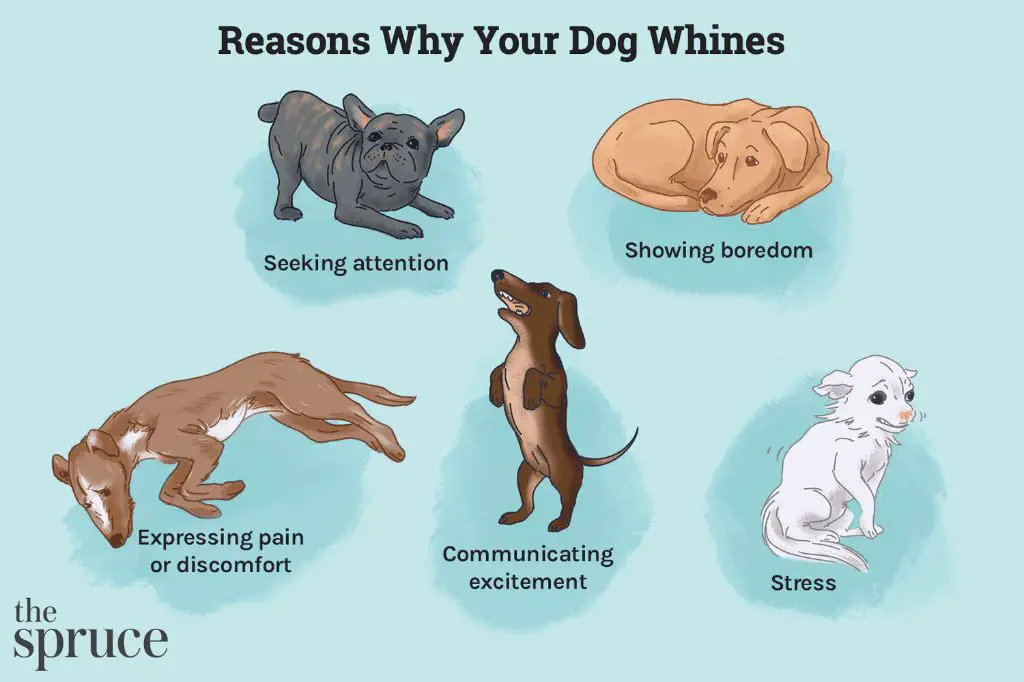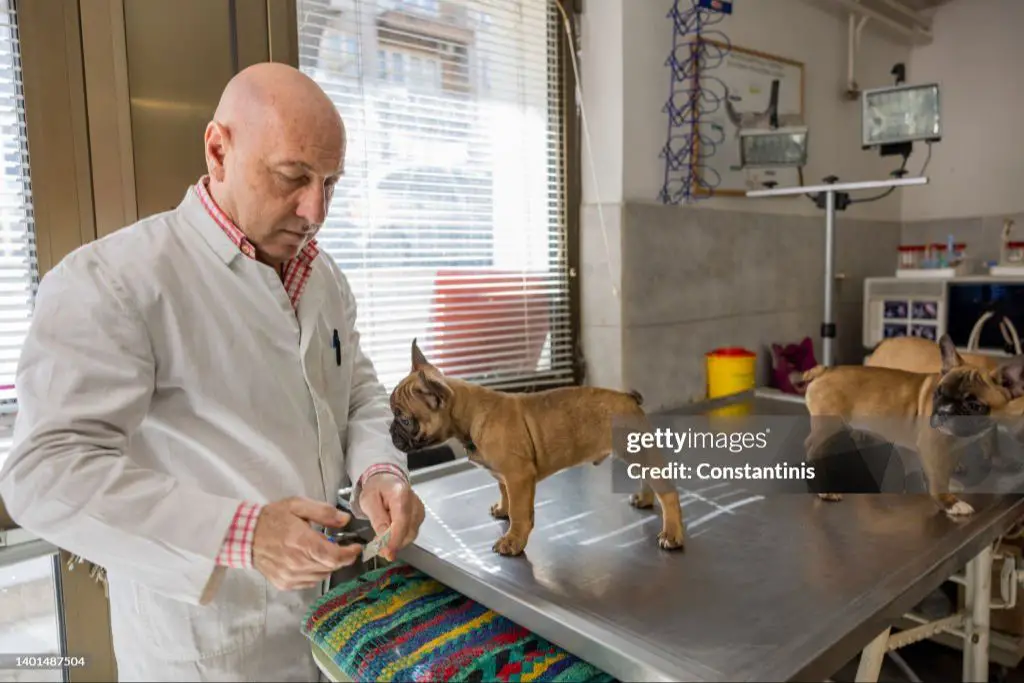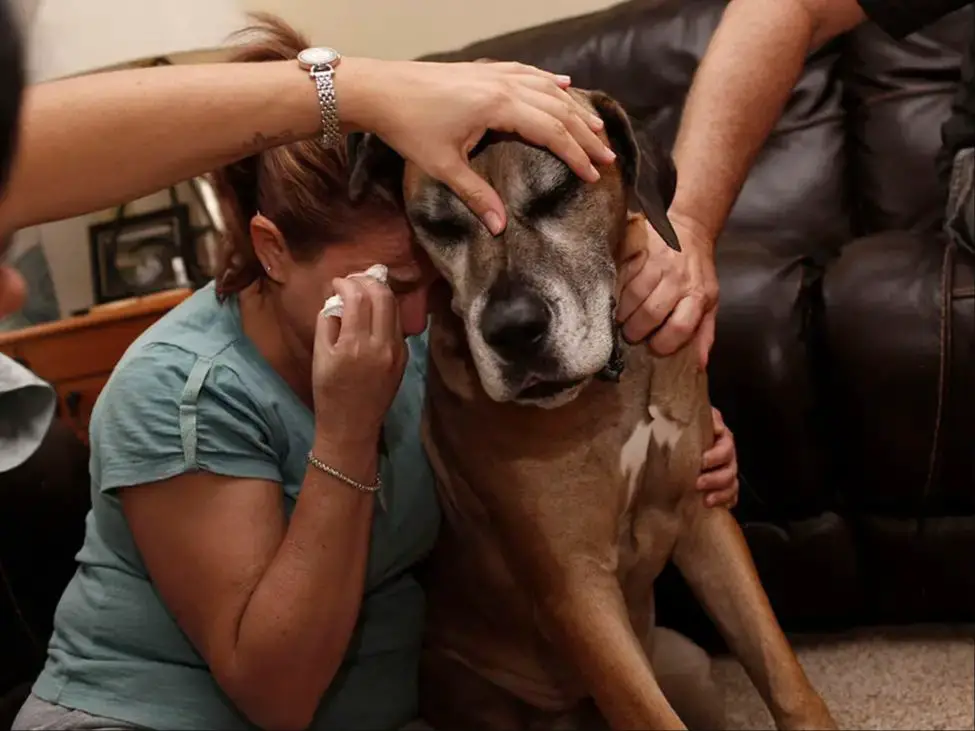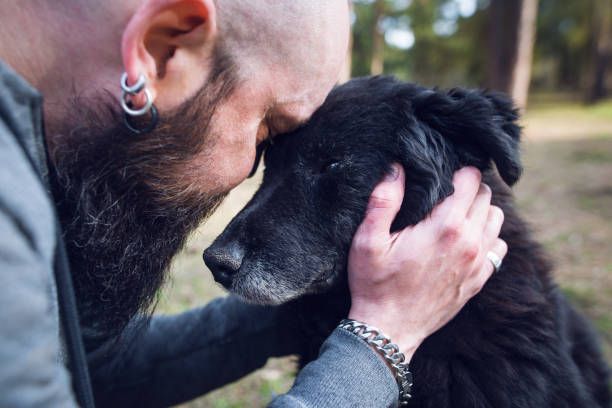Introduction
Euthanasia is the act of putting an animal to death humanely to relieve suffering. It may be considered when a dog has an incurable disease, is in chronic unmanageable pain, or has a poor quality of life that cannot be improved with treatment. There are several methods of euthanasia used on dogs, including intravenous injection of a barbiturate overdose, inhalant anesthetics like isoflurane, and the injection of potassium chloride to induce cardiac arrest.
In most countries, euthanasia is only performed by licensed veterinarians. The decision to euthanize is difficult, and pet owners work closely with their veterinarian to determine if and when it may be appropriate. While euthanasia can help relieve a dog’s suffering, it does not come without emotional complexity. This article will explore the euthanasia process, including the methods used, evaluating pain and quality of life, owner involvement, ethical considerations, and grieving after loss.
Understanding Pain
Dogs experience pain in similar ways as humans. Like us, they have nociceptors or special nerve cells throughout their bodies designed to sense pain or tissue damage. When activated, these nociceptors send signals through the spinal cord and up to the brain to register pain.

Dogs may express pain through behavioral changes or physical signs. Common indicators that a dog is in pain include:
- Whimpering, crying, or moaning
- Aggression or biting
- Licking or chewing at a wound
- Limping or holding up a limb
- Reluctance to move, run, or play
- Hiding or seeking isolation
- Loss of appetite
- Panting, trembling, or appearing anxious
- Dilated pupils
- Increased heart rate and blood pressure
Being able to recognize signs of pain is important for pet owners. This allows them to seek veterinary assistance to diagnose the underlying cause and create an appropriate treatment plan.
Euthanasia Methods

There are two primary types of euthanasia methods used for dogs – chemical and physical. Chemical euthanasia typically involves an overdose of an injectable drug like pentobarbital or sodium pentobarbital. This is administered intravenously by a veterinarian to quickly stop the dog’s heart and lungs. It is considered a relatively gentle, painless way for a dog to pass away.
Physical methods involve more direct action to cause death and may include captive bolt, gunshot, or anesthetic overdose. The captive bolt gun has a blank cartridge that fires a bolt into the dog’s skull while they are under anesthesia. Gunshot euthanasia is usually performed with a small caliber bullet or shotgun slug aimed at the dog’s brainstem. These physical methods require skill and precision to minimize any pain or distress for the animal. Many veterinarians prefer chemical euthanasia as being more reliably humane and peaceful. However, physical methods may be required in some cases for safety or legal reasons.
Assessing Pain
When euthanizing a dog, it’s crucial to ensure the process is as painless as possible. A common concern is that dogs may still feel pain during the procedure even though they appear unconscious. However, research indicates that most methods of euthanasia effectively induce rapid unconsciousness and loss of cortical brain function in canines.
During euthanasia, a veterinarian carefully monitors the dog’s vital signs including heartbeat, pulse, and breathing. When these vital functions cease, it confirms that the dog’s brain is no longer active and they cannot perceive pain. Some visible clues that a dog has lost consciousness include fixed/dilated pupils, loss of eye reflexes, muscle relaxation, and loss of jaw tone. Monitoring these signs helps validate that the dog is not experiencing any pain or discomfort as they pass.
While the thought of a dog being in pain is distressing, when performed correctly by a veterinarian, euthanasia is generally a peaceful, pain-free process. Understanding what happens physiologically can provide reassurance that the dog is not suffering when being euthanized.
Owner’s Presence
Many pet owners face the difficult decision of whether to be present during the euthanasia process. There are arguments on both sides of this issue.

Some feel that being present during euthanasia can provide comfort and closure. The owner can be there for their pet’s final moments, offering soothing words and pets. This can allow for a gentle goodbye and prevent the pet from feeling abandoned in its final moments. Many believe that a peaceful passing in a familiar environment with a trusted human is the most ethical and compassionate approach.
However, being present may also be traumatic for some owners. Witnessing a pet’s death can be an intensely emotional and upsetting experience. Some owners find it too difficult or disturbing. There is no right or wrong way to handle this – each owner must decide based on their own sensibilities and relationship with their pet. A pet owner should never feel guilty for choosing what is best for their own emotional well-being.
If an owner decides to be present, the veterinary staff should take measures to make the process as calm and peaceful as possible. They can explain each step in detail so owners know what to expect. Soothing music, gentle lighting, and allowing adequate time for goodbyes can also help manage the experience.
This difficult decision is an intensely personal one. Pet owners should reflect carefully and consult with their veterinarian. The most important thing is choosing an approach that minimized any pain and distress for the pet while also supporting the pet parent’s emotional needs.
After Euthanasia
After a dog is euthanized, their bodily functions will slowly shut down until there are no signs of life left. The dog’s breathing and heartbeat will stop within minutes after the euthanasia injection is administered. Their muscles will relax, eyes will become fixed and dilated, and the body will become very still. It is normal for some bodily fluids to be released after death, but the dog will not appear to be in any discomfort.
After the dog has passed on, there are a few options for handling their remains. Many pet owners choose to have their dog cremated, either privately or in a communal setting. The ashes can be returned in an urn or kept at the crematory. A full body burial is another option, either in a pet cemetery or sometimes in the owner’s backyard, depending on local laws. Some veterinary clinics or pet loss services will handle the burial arrangements for you. Whichever option you choose, you can take comfort knowing your beloved dog is at peace after euthanasia.
Making the Decision
Deciding when to euthanize a beloved pet is one of the hardest decisions a pet owner will face. However, it is also one of the greatest responsibilities and acts of kindness an owner can provide. There are a few key considerations when deciding if it is time:
Quality of Life
The most important factor is your dog’s quality of life. Consider if they still enjoy foods they used to love, if they can move around comfortably and participate in walks or play, and if they are interacting with you and showing signs of happiness and comfort. Make an honest assessment of any pain, discomfort, loss of dignity or joy. Be alert for signs it is time such as lack of interest in food, water or surroundings.
Medical Prognosis
Consult with your veterinarian for an honest assessment of your dog’s prognosis and options. In cases of terminal illness, euthanasia may be recommended to prevent further suffering. However, even without a terminal diagnosis, euthanasia may be appropriate if your dog’s health and quality of life are declining with no prospect of improvement.
Financial Considerations
Euthanasia may be necessitated if treatment options are limited by financial constraints. However, cost alone should not be the deciding factor. Focus first on quality of life, and discuss all options with your vet before deciding.
While emotionally difficult, view euthanasia as the final act of love we can give our pets. Focus on making them comfortable, spending quality time together, and finding closure through grief support.
Coping with Loss
Saying goodbye to a beloved pet is incredibly difficult. Many owners experience immense grief and sadness after electing euthanasia. The loss of a pet can be just as heartbreaking as losing a friend or family member.

Allow yourself to fully experience the pain of loss. Don’t feel pressured to “get over it” right away. Grief has no timeline. Be patient with yourself as you adjust to life without your pet.
Consider joining a pet loss support group. Connecting with others who have gone through the same experience can provide comfort and lessen feelings of isolation. Many veterinary hospitals and animal shelters offer free pet bereavement counseling services as well.
Create a memorial for your pet. Make a photo album, planting a tree, or having your pet cremated can help provide closure. Preserving positive memories is an important part of the grieving process.
Take care of yourself during this difficult time. Get plenty of rest, eat healthy foods, and lean on your social support system. The pain of loss can be consuming, so be sure to practice self-care.
With patience, compassion, and support, most pet owners can navigate the grieving process in a healthy way. The sadness may never fully go away, but it will soften over time. Focus on the happy memories with your pet, and know you gave them a lifetime of love.
Ethical Considerations
When deciding whether to euthanize a dog, pet owners face difficult ethical questions.
Arguments For Euthanasia
Proponents of euthanasia argue it can be the most humane option when a dog is terminally ill or suffering greatly. Euthanasia can provide a peaceful, painless death and prevent further suffering. It may be the only way to relieve pain and distress when treatment options have been exhausted.
Arguments Against Euthanasia
Opponents believe euthanasia devalues life and that dogs should die naturally. They feel euthanasia is morally wrong, even if the intent is to alleviate suffering. Some argue quality of life judgments are subjective and open to misinterpretation. They advocate postponing euthanasia as long as possible.
Alternatives to Consider
Before choosing euthanasia, pet owners can explore alternatives like pain medication, physical therapy, dietary changes, or palliative home care. However, if the dog’s condition is terminal, there may come a point where nothing more can be done. At that stage, owners must reflect deeply on what is best for the dog.
Conclusion
The decision to euthanize a beloved pet is never easy. However, pet owners can take comfort knowing that, when done correctly by a licensed veterinarian, euthanasia is a painless and peaceful way for a dog to pass away.
There are two main types of euthanasia – sedation followed by lethal injection, or anesthesia overdose. Both methods, when administered properly, allow the dog to quickly and peacefully fall unconscious before passing away.
It’s normal for owners to worry their dog will experience pain or distress. However, studies show that with adequate sedation, dogs do not appear distressed or in pain during the process. Some movement or muscle twitches after death are normal reflexes not an indication of suffering.
While extremely difficult emotionally, owners should avoid feeling guilty for choosing euthanasia for their pet’s benefit. In most cases, it is the final act of love an owner can provide their dog at the end of a long, happy life together.